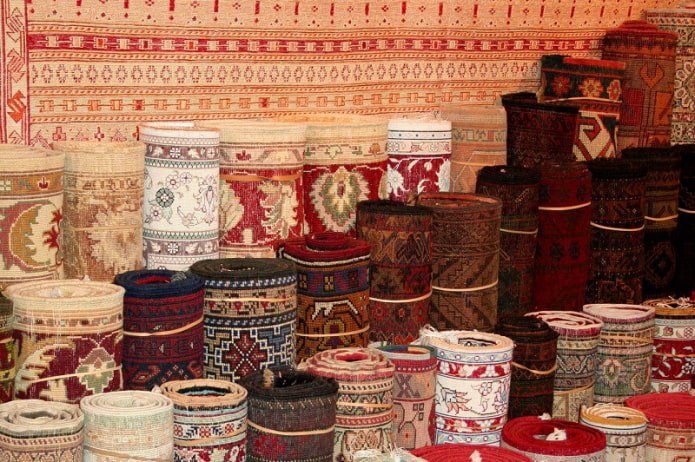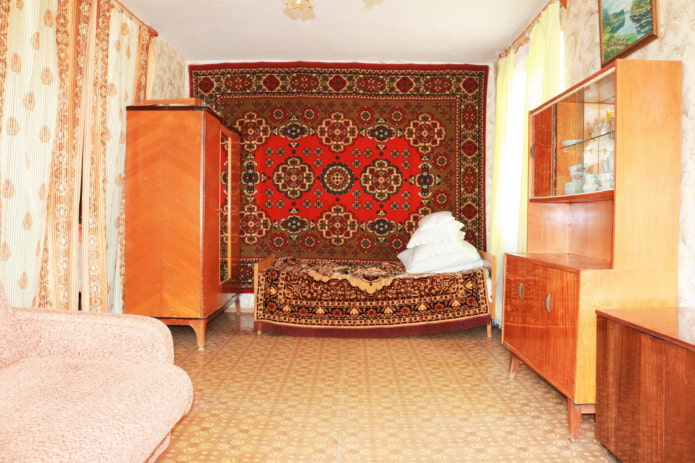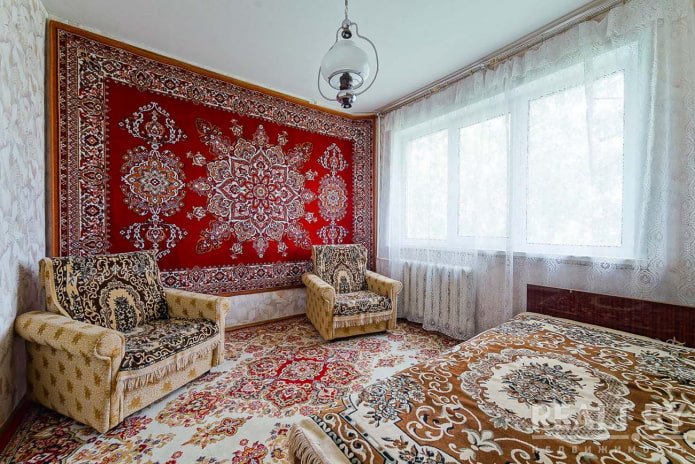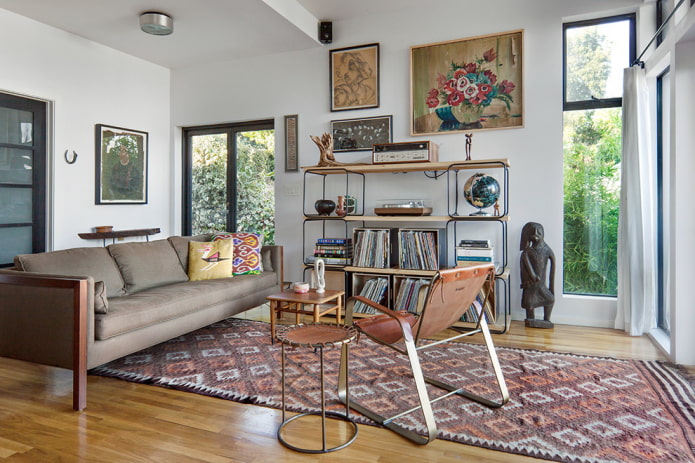Why were they so valued?
For many nations, carpets with various symbols carry religious and energetic connotations. Turkey is especially famous for them – carpet weaving is an ancient craft and plays an important role in the country’s cultural heritage.
In Europe, the first carpets began to appear in the 16th century and only royalty could afford them. And in Russia, the love for carpets arose during the time of Peter the Great, when trade with other countries was actively developing.
In the Soviet Union, a quality carpet was considered a symbol of prestige. The products were brought from Azerbaijan, Georgia and Turkmenistan, people queued up to buy them, they were ordered through connections and bought from resellers – the love for beautiful canvases in the USSR was hard to overestimate.

A demonstration of taste and wealth
Carpets in the USSR were purchased for a long time, passed down from generation to generation and served as a wonderful gift. In the era of shortages, this was especially appreciated. Having a carpet was considered one of the ways to boast about one’s wealth, and sometimes even connections. But most citizens had to save up for several months to buy it.
Towards the end of the 20th century, products were sold without queues and appointments – you could buy them in a regular furniture store, but for this, with a salary of 130 rubles, you had to save 50 rubles for about six months.
Instead of a painting
Bright carpets with plant ornaments were valued for their decorativeness. Taking up a large part of the wall, they immediately became the main highlight of the interior. This was also facilitated by the rich coloring: red shades were considered the most common.
The carpet also saved apartment owners from repairs: any damage (faded wallpaper, cracks or stains on the wall) could be hidden by a picturesque canvas with patterns. Who will guess that it has a defect?

Maintaining fashion
In the Soviet Union, carpets became popular not only because of their aesthetic functions. When a guest first came to the house of a person who had decorated his wall with them, he experienced real admiration – the canvas looked rich and original.
Many residents of the country sought to get the same luxurious product, so that it would be “like other people’s”.
Creating coziness
A wall carpet amazingly transformed a room. Looking at the soft and beautiful canvas with a plant pattern was much more pleasant than empty walls. And since it was most often hung near the bed or sofa, most Soviet children happily fell asleep looking at the intricate patterns and still remember this with a sense of nostalgia.
The wall carpets were of the highest quality: made of natural wool, they did not fade or wear out due to their special location. True, the products accumulated dust and required periodic cleaning.

As insulation
Thick and warm Soviet carpets in thin-walled Khrushchev-era apartments served as protection from the cold, especially if the bed was located near the “street” or entrance wall. They not only retained heat, but also minimized the noise level. The fleecy surface absorbed sounds from neighbors well and protected the privacy of the owners themselves.
For the same reasons, carpets still decorate the walls of many apartments: this is the easiest way to soundproof a room without spending money on expensive repairs.
In a modern interior
Today, carpets are no longer a symbol of prestige, and the current generation does not feel such a strong need to demonstrate their wealth. The main task of a modern interior is to reflect the character of its owner, while remaining functional and harmonious. That is why high-quality and well-preserved Soviet products are removed from the walls, taken to the dry cleaners and laid on the floor.
Carpets look great in Scandinavian style, eclecticism and even loft. But fashion is cyclical, so wall carpets are also becoming increasingly popular – though not Soviet ones, but designer ones or in the form of tapestries.

In the Soviet Union, colorful woven canvases placed on the wall became a real symbol of the era. As we can see, there were many good reasons to arrange them in such an unconventional way.
Now reading:
- Bedroom design ideas of 15 sq m: stylish solutions and 42 photos
- What Causes Yellow Leaves on Houseplants? 6 Main Causes and Solutions.
- Wooden Beds: More Than 80 Photos of Interiors and Design Ideas
- White walls in the interior: 50 ideas and photos for design inspiration.
- Things You Should Never Microwave